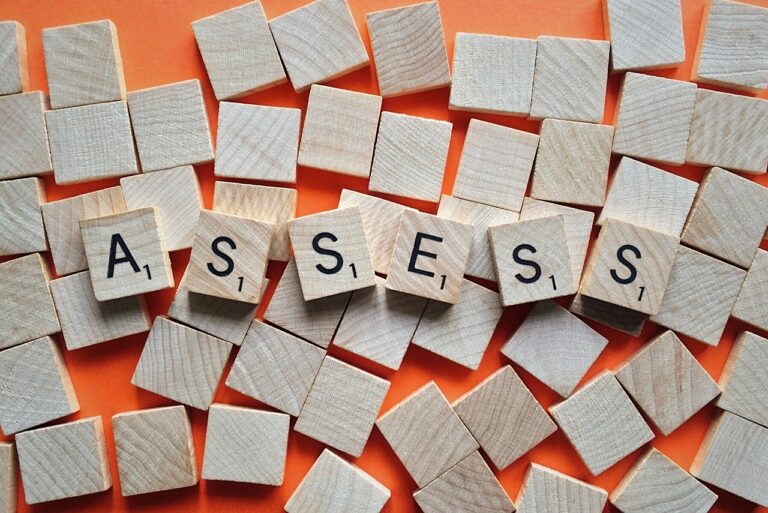Every organization must identify its employees’ leadership potential and establish processes for developing those skills.
Why? Current leaders may retire or leave the company, get transferred or promoted, or the company may be growing. These situations create openings for leaders from inside or outside the organization.
As Forbes notes, promoting from within brings several benefits: it saves time and money while increasing employee morale and retention.
In our post on why leadership training is important for every employee, we detailed how leadership training improves interpersonal and communication skills, even for employees with no interest in managing others, while also “building your bench” of future potential leaders.
Leadership training and team building activities can also help you assess leadership potential among your team members.
How Team Building Activities Can Reveal Leadership Traits
Corporate team building programs naturally create scenarios and situations for any member of a team to temporarily step into an informal leadership role. Observing these interactions across different activities helps current leaders spot leadership traits and potential among their team members.
For example, in our guide to team building activities that work, we note, “each (employee) brings specific strengths and capabilities to team building. Depending upon the specific activity, individual team members may play any of half a dozen different roles,” including the team leader.
Because nearly all team building activities include some level of competition, team members will naturally and organically choose an informal leader who gives them the best chance of winning.
In a program such as a City SmartHunt®, the leader may choose the overall strategy and then map out the most effective route to maximize points. Again, the leader, in this case, shouldn’t necessarily be, and often isn’t, the highest-ranking person on the team based on the company org chart.
Many options in our extensive library of over 130 programs include a “debrief” exercise at the end of the activity to reflect on and reinforce essential takeaways. This is another opportunity for executives present to assess the leadership qualities of team members.
Benefits of Using Team Building as a Leadership Potential Assessment
Assessing employees’ leadership potential involves various approaches, including personal observation, feedback from peers and managers, behavioral assessments such as Myers-Briggs Type Indicator (MBTI) training, and performance appraisals.
However, team building activities can provide a more natural environment than traditional settings to assess employee abilities, such as leadership potential, because they are informal, focused on non-work goals, and outside the daily work routine.
Observing employees engaged in team building exercises can reveal underlying team dynamics and conflicts and provide a chance to see how employees handle these situations and deal with disputes in non-work, unfamiliar activities.
Team building programs enhance employee engagement, communication, and collaboration, and provide the chance to observe team dynamics and leadership potential in employees.
Programs that can be particularly revealing are those that require coordination and collaboration across groups and within teams, such as Bridge to the Future.
In this activity, different teams independently build sections of a bridge (using only cardboard and duct tape) while team leaders get together to share strategies and ensure that when all of the sections are assembled at the end, the final product will have the structural integrity to support the weight of the entire group!
3 Steps to Assessing Leadership Potential through Team Building Activities
To effectively use team building activities as an opportunity to evaluate leadership potential in employees, it’s vital to follow an organized process, from establishing goals at the outset to debriefing participants at the conclusion of the event.
1. Define Your Goals
The first step in planning any team building event is establishing and clarifying your objectives. What are you setting out to accomplish in addition to assessing leadership skills?
Our new eBook, 10 Business Scenarios Where Team Building Leads to Success, details how team building programs can help address 10 common challenges, from navigating significant business or structural changes to integrating remote teams, fostering innovation, and improving problem-solving methods.
Once you’ve identified high-potential individual contributors and want to start developing them into your next generation of leaders, our Developing Emerging Leaders program is ideal. Participants meet virtually in five sessions over ten weeks, honing their management, communication, and conflict-resolution skills.
2. Choose the BEST Activity
Our extensive library of team building events targets specific leadership qualities relevant to assessing leadership potential. For example, fast-paced activities like A Minute 2 Win It! showcase the ability to perform under pressure. Escape rooms and murder mysteries test problem-solving skills. And build-it activities like Momentum and Pipeline reveal cross-departmental collaboration abilities.
Here are four more examples of how specific programs can help assess different aspects of leadership potential.
Initiative and critical thinking
Fans of the popular reality TV show will instantly understand why Corporate Survivor reveals critical thinking skills. Choosing a limited number of items to survive being lost in the wilderness, and forming alliances with other tribes are part of the fun challenges to leadership capabilities.
Communication and delegation skills
These skills are vital in many team building activities, but a great place to observe them is in any of our charitable corporate social responsibility (CSR) programs.
These meaningful events, which involve assembling items for donation to nonprofits helping seniors, children, veterans, people experiencing homelessness, and other groups, require the coordination of efforts to solve iPad challenges, obtain tools and parts, assemble the items, and perform final tests and safety checks.
Ability to motivate and inspire others
Our unique and popular Igniting Team Performance® program applies to many business scenarios. It’s valuable in assessing leadership potential because it reveals participants’ ability to influence and encourage others.
It combines fun with training on goal-setting, leadership, and communication skills as teams complete a series of progressively complex challenges designed to align with your event goals. A short debrief session following each activity reinforces lessons learned and actionable takeaways.
Conflict resolution and problem-solving skills
Observing how employees manage and resolve workplace conflicts is vital to assessing leadership potential. Fortunately, managing conflict professionally and effectively is a skill that can be learned and developed.
Our Conflict Resolution Training workshop reveals participants’ ability to resolve conflicts amicably and teaches them proven methods to address issues and disagreements with respect and professionalism.
Employees leave this exercise better able to address rather than avoid conflicts, prevent disagreements from escalating emotionally, and utilize proven conflict resolution strategies.
3. Facilitate and Debrief Your Corporate Event
To get the most out of your team building or professional development event, start by determining your objectives and then working with a professional team building provider to select and customize a program to meet your needs. Choose a venue free of distractions so participants can focus on the activity.
Work with a professional facilitator like Best Corporate Events to help assess your needs, identify the ideal activity to accomplish your goals, and even make adjustments to help meet your specific objectives. Our experienced facilitators can guide the activity and help you identify leadership potential during team assessment.
Many of our programs have debriefing sessions to help reiterate and reinforce the key lessons and takeaways from the activity. This is an excellent opportunity to reflect on leadership skills imparted in areas such as communication, problem-solving, and conflict resolution.
The BEST Choice for Leadership Development
There are many methods for evaluating leadership potential in employees, from peer feedback to behavioral assessments and performance appraisals. However, team building activities can provide a more natural setting than the workplace or office to assess leadership potential because they are informal and outside the daily work routine.
Observing employees during team building programs can reveal how they respond to time pressures and approach unfamiliar problems while teaching and developing communication, relationship-building, and conflict resolution skills.
Professional development workshops such as Emotional Intelligence Training, Meeting Management, and Manager’s Guide to Business Coaching provide additional opportunities to assess the skills of new and potential leaders and impart valuable skills for effectively directing the work of others.
Once leadership potential is discovered in employees:
- Develop a plan to coach and mentor them
- Give them opportunities to lead projects
- Enroll them in professional development programs to enhance specific capabilities such as presentation skills and time management.
Discover and develop your organization’s employees’ leadership potential by partnering with Best Corporate Events today! Contact us to start the conversation about making team building and professional development part of your next company event.


